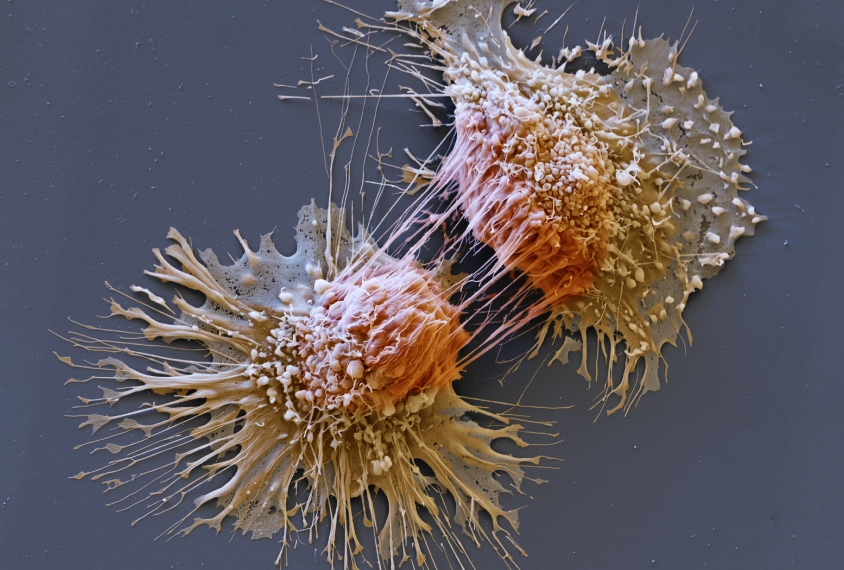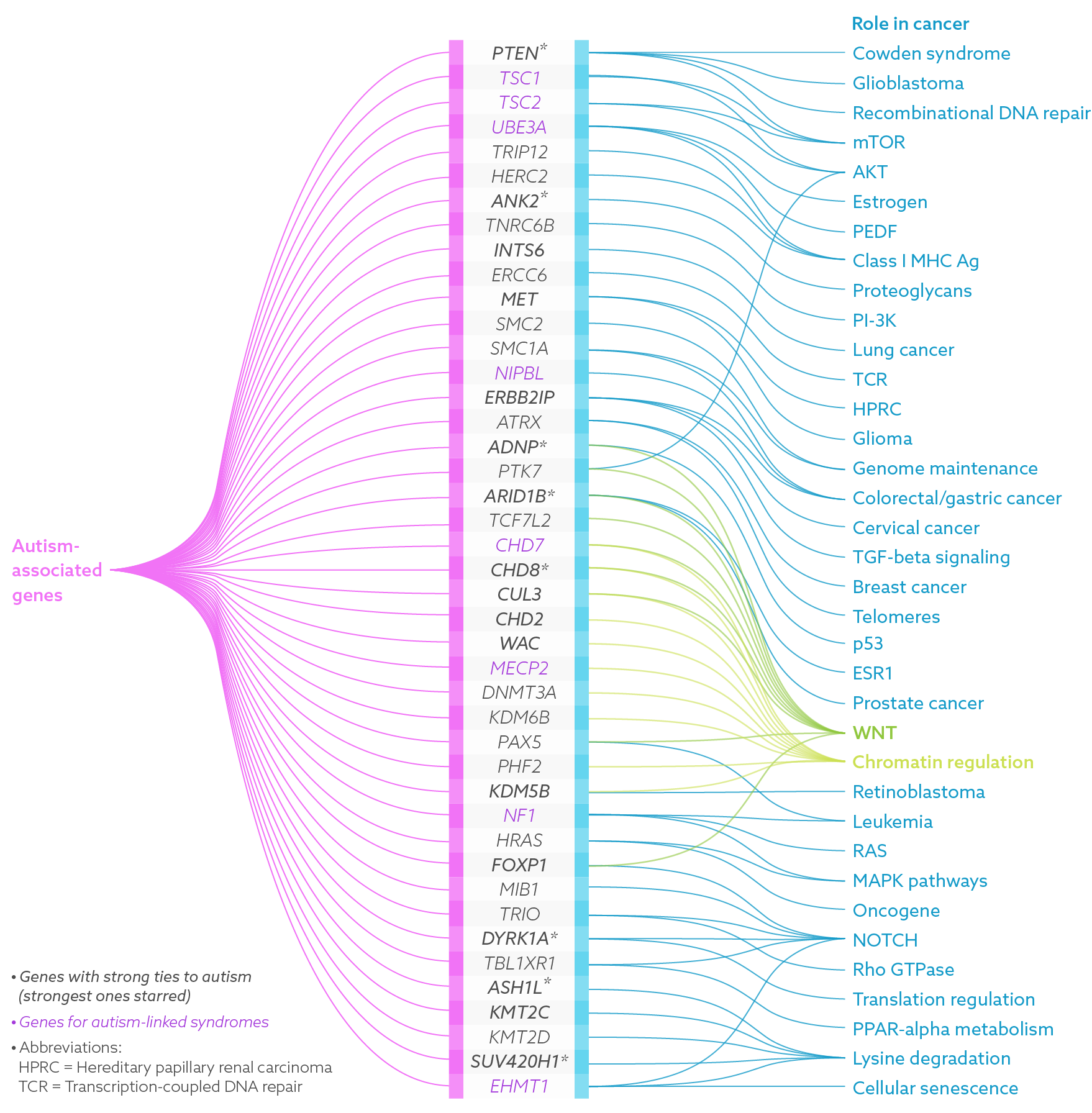
©Eye of Science / Science Source.com
THIS ARTICLE IS MORE THAN FIVE YEARS OLD
This article is more than five years old. Autism research — and science in general — is constantly evolving, so older articles may contain information or theories that have been reevaluated since their original publication date.
Over the past five years, researchers have become increasingly aware of an extraordinary coincidence: Many of the cellular pathways involved in cancer overlap with those implicated in conditions associated with brain development, such as autism.
Intrigued by this connection, autism researcher Janine LaSalle set out two years ago to fully document the extent of the crossover. She teamed up with researchers from both fields to compile a catalog of the genes linked to both conditions. The result appeared earlier this year in Trends in Genetics1.
“There has been a lot of new genetics done with sequencing with autism and cancer. We figured it was time to try to put together a list of [overlapping] genes,” says LaSalle, professor of medical microbiology and immunology at the University of California, Davis.
The resulting 43-gene list (see graphic below) is just a start — researchers are continually finding new genes for both conditions — but suggests ways for the fields to collaborate, she says. Mouse models or therapies developed for cancer might be useful for autism, and vice versa. The genes’ links to autism vary in rigor, but the list includes 17 genes considered strong candidates for the condition. Another eight genes lead to autism-related syndromes, such as tuberous sclerosis or Rett syndrome.
The list highlights a few key cancer pathways that also appear to play an important role in autism. One of these points of convergence includes proteins that alter the dense DNA-protein complex called chromatin, and thereby modulate gene expression. Another centers around WNT signaling, a group of pathways that translate messages from outside the cell into changes in gene expression.

Graphic by Lucy Reading-Ikkanda
Cell growth:
WNT signaling coordinates the process by which an embryo’s dividing cells develop into parts of the body. Some people with autism have been found to carry mutations in components of the WNT pathway, such as a protein called beta-catenin.
It is unclear why autism and cancer share so many risk genes, but the answer probably lies in the two conditions’ ties to cell growth, says Thomas Frazier, director of research at the Cleveland Clinic Foundation. Frazier studies a long-known cancer gene called PTEN.
In 2001, researchers described a boy with a PTEN mutation who had both cancer and autism2. Since then, several autism sequencing studies have revealed more people with autism and PTEN mutations. PTEN is now among the genes with the strongest causative links to autism.
One of PTEN’s functions is to prevent cells from growing and dividing too rapidly. People with autism and PTEN mutations have enlarged heads, which may result from an overgrowth of nerve fibers. In cancer, mutations in PTEN remove one of a series of brakes that stops cells from growing out of control.
“It is not a stretch to believe that genes involved in cancer would also be involved in a disorder of brain development,” Frazier says.
Cancer chances:
The existence of risk genes linked to both cancer and autism does not mean that people with autism generally have an increased risk of cancer. For instance, the specific mutation in a gene such as PTEN may differ in people with cancer versus those with autism3.
What’s more, epidemiological data show no link between cancer and autism. In a study published last year, researchers looked at the medical records of more than 1,500 adults with autism and found that, as a group, they were no more likely to have cancer than adults in the general population.
Still, it is possible that some autism-linked mutations increase cancer risk, says LaSalle. Because mutations in the genes the study highlights are rare, the effect of any one of these mutations might not show up in larger epidemiological trends.
Also, most of the participants in sequencing studies of autism are children, and would not yet be expected to have cancer. For example, a 2014 study looked at 15 people with mutations in CHD8, a top autism candidate gene; the two adults over age 40 in the study had tumors.
“We have to almost wait until these kids age to the point where they’d be getting cancers,” says LaSalle. If some mutations do increase cancer risk in adults with autism, she says, “it might be good for their own well-being to know that.”
By joining the discussion, you agree to our privacy policy.